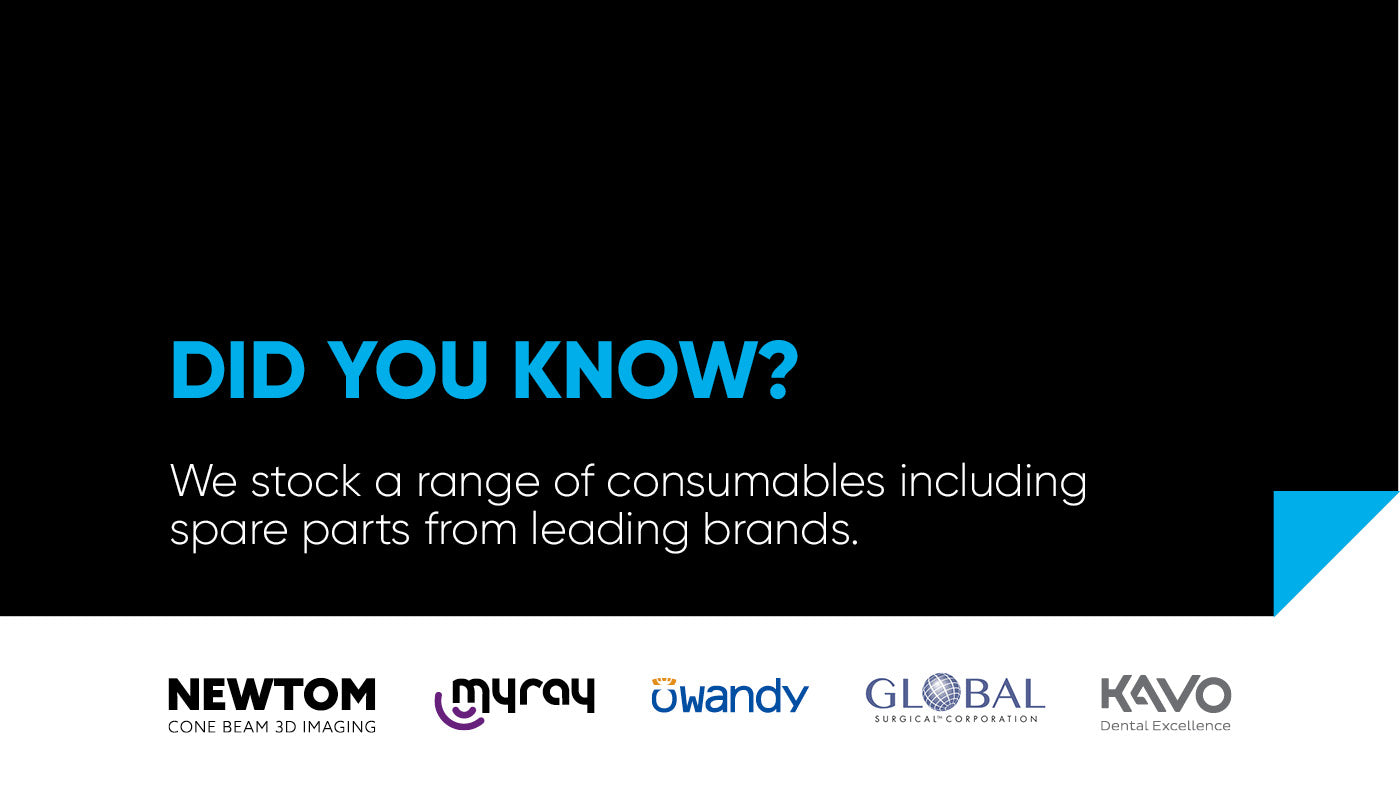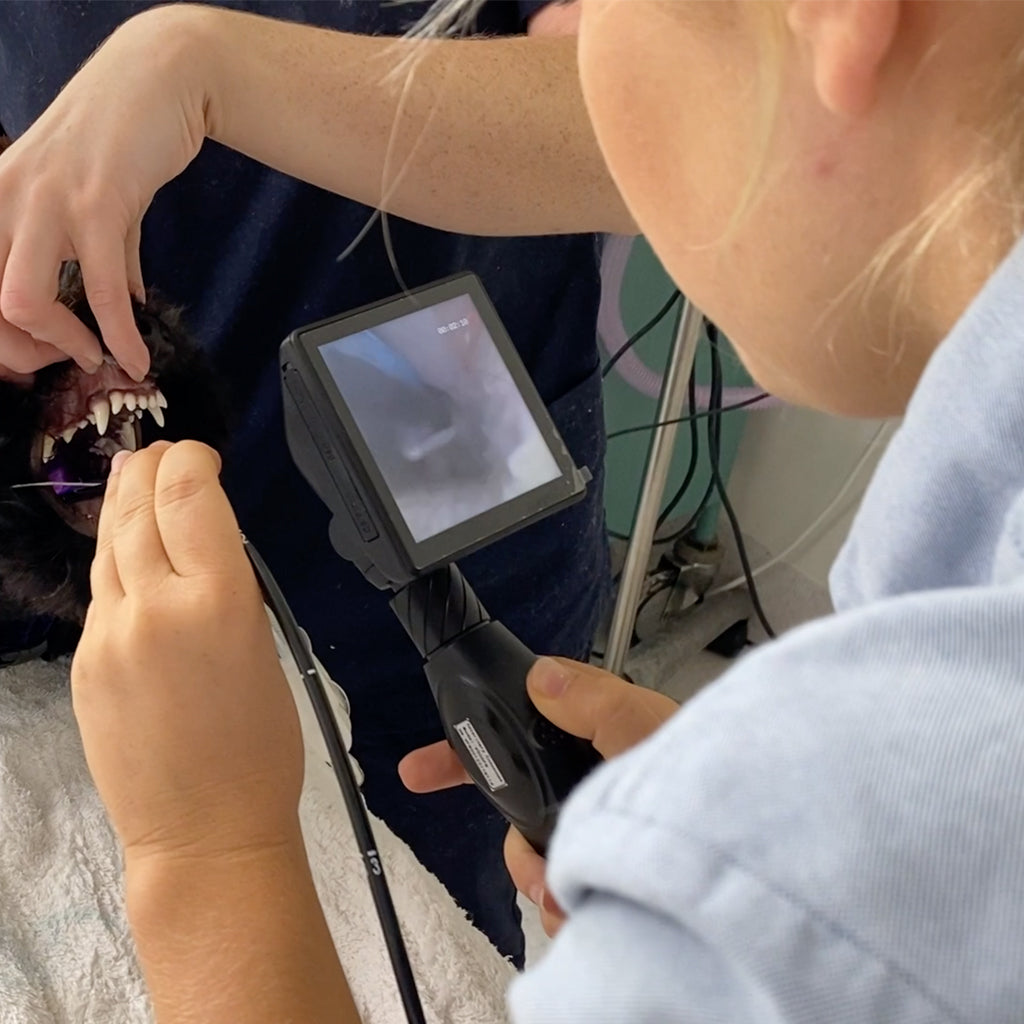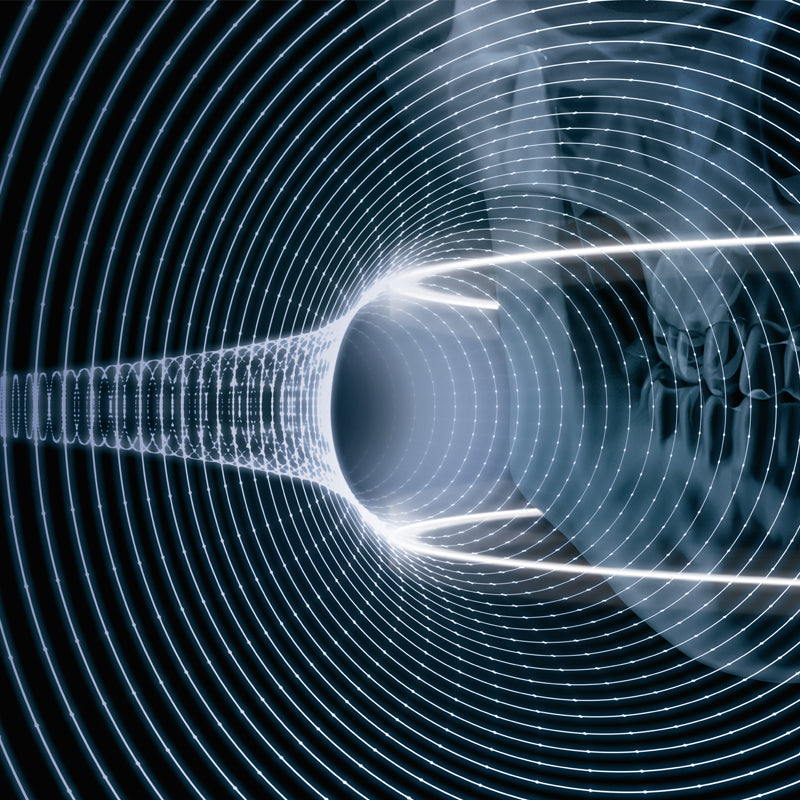By carrying an endoscope, a vet can provide better care for their patients beginning treatment immediately and help to ensure that they recover quickly from any gastrointestinal problems.
Endoscopes can also be used to take biopsies of gastrointestinal tissue, helping vets to diagnose gastrointestinal conditions such as ulcers, tumors, and blockages.
BELROSE VET HOSPITAL PERFORMING IN-HOUSE ENDOSCOPY
The challenge:
Veterinarian, Dr John Thirlwell, owns and operates the Belrose Veterinary Hospital – a busy vet practice in Sydney’s north. Dr Thirlwell’s patients are mainly local pet dogs and cats. The practice offers a broad range of services including vaccinations, dental procedures, surgical sterilisations, orthopaedics, X-ray, and general soft-tissue surgery.
However, like most suburban vet practices, when pets require specialist services, including endoscopy, Dr Thirlwell refers his patients to a nearby specialist vet practice. This means that rather than having a pet treated in-house, pets and their owners need to make an appointment to visit a specialist practice on another date, or Dr Thirlwell’s team arranges emergency animal transport to the specialist.
Endoscopes are used regularly by specialist veterinarians to check the health of a pet’s gastrointestinal and respiratory tracts. The camera’s imaging capabilities can diagnose issues related to breathing, digestion, and the abdomen, including inflammation, swelling, abnormal growths, strictures, and blockages in the oesophagus, stomach, intestines, or colon.
The purchase of an endoscope can be prohibitively expensive for veterinarian practices. Specialist veterinarians usually use secondhand endoscopes purchased from medical doctors for around $25,000. This price can climb to around $50,000 when a light source, video processor, trolley, and dedicated laptop are required to operate the endoscope.
The product solution
The Yateks V Series veterinarian endoscope is an effective, portable, high-quality, all-in-one solution for veterinarian practices, animal hospitals and field work. It is also an affordable solution with prices for a complete kit less than $8000 plus GST.
Specifically designed for veterinarians, the Yateks V Series is quick and easy to operate and disinfect between uses. The endoscope incorporates the latest technology to allow veterinarians to observe inside the body of small animals, such as dogs and cats, without performing major surgery, and its imaging functionality allows for the production, recording and saving of high-quality endoscopic images and video.
It features an additional working channel with forceps to remove foreign objects from an animal’s body, as well as biopsy forceps for the collection of tissue samples. The instrument includes a two-way-articulation insertion tube; a camera head with a range of optional diameter probes for all patient sizes; multi-setting LED illumination; a 4” adjustable viewing screen; and a high-resolution sensor with 120° angle of view. The Yateks V series is a wireless system that can also connect to an external monitor to view and share endoscopic images and video.
The benefits
The Yateks V Series is a fully featured and affordable solution that allows a veterinarian practice to increase its range of services by offering endoscopy in-house. Designed specifically for veterinarians, the camera’s high-quality imaging means that for the first time, a veterinarian can use a customised animal endoscope in their own surgery to view and record images and real-time video of an animal’s oesophagus, stomach, intestines, and colon. The endoscope also allows visual access to typically hard-to-reach areas such as an animal’s nasopharynx in the upper part of the throat and behind the nose, where irritants such as grass seeds can cause problems.
The Yateks V Series incorporates a working channel and forceps that can be used to remove foreign objects and oesophageal blockages such as chicken necks. Biopsy forceps can also be used to collect tissue samples from a pet’s digestive and respiratory tracts, quite often removing the need for investigative surgery. Endoscopic imaging and surgical procedures can all be performed simultaneously while an animal is under general anaesthetic, streamlining practice workflows.
Having the Yateks V Series in a veterinarian practice results in less specialist referrals (via in-house diagnoses), less stress and discomfort for patients when compared with surgical procedures, decreased anaesthetic time, faster recovery times, and more efficient patient management – benefits that are great for the animal, the owner, and the veterinarian.
Most importantly, the vital clinical data collected via endoscopy improves diagnoses and health outcomes for patients; and clients can feel reassured that their pet is being treated in-house by a veterinarian they know and trust.
By being able to perform endoscopy in-house, veterinarians can increase a practice’s range of services, as well as its bottom line.
Yateks V Series is an all-in-one system that incorporates its own light source, easy-to-use image-enhancement functions, a high-resolution display screen, a working channel and forceps, and a range of optional diameter probes, making it suitable for all patient sizes.
What the client says
For veterinarian Dr John Thirlwell, the Yateks V Series means that for the first time, he can perform endoscopic procedures on his patients in-house, rather than unnecessarily referring his patients to specialist care. To date, Dr Thirlwell has used the camera to conduct examinations of a patient’s oesophagus, and to check airways for signs of laryngological paralysis and collapse in dogs. He has also been able to examine behind the soft palate of a puppy, checking for a suspected grass seed caught somewhere in its nasopharynx.
The endoscope has proved to be a useful collaborative diagnostic tool as well, with Dr Thirlwell sharing video he recorded with a specialist colleague for a second opinion on a patient case. “I’m really happy with the image quality – it’s really great,” said Dr Thirlwell. “I can see the images on-screen. The light quality is excellent, and the image quality is excellent. It’s really easy to record – either pictures or video – with just one button on the handpiece. It’s also very easy to set up because it’s wireless.”
Dr Thirlwell says the endoscope is also improving practice workflows by allowing him to seamlessly incorporate endoscopy into his surgical routine. “For example, sometimes we might be concerned about an oesophageal foreign body and not 100 percent convinced about the situation,” explained Dr Thirlwell. “If we take an x-ray, the animal is anaesthetised so we can quickly take a look with the endoscope and rule out any concerns.”
Overall, Dr Thirlwell says he is happy to recommend the Yateks V Series veterinary endoscope to his colleagues. “I think it’s a worthy addition for any vet practice,” he said. “It’s easy to use and I think it’s at an attractive price point. Having an endoscope makes us better at what we do, and it solves some of the frustrations we experience, for example a few of those things that should be easy to look at in general practice, like behind the nasopharynx. Having an endoscope makes it possible for us to perform a complete examination on a patient.”




